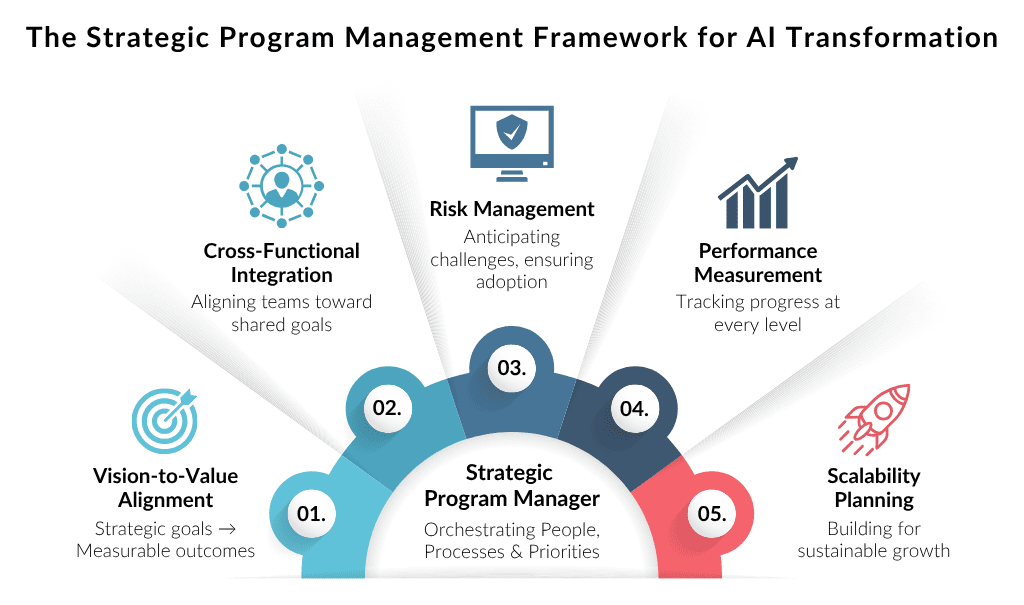
Why AI initiatives fail—and how strategic program management changes everything
According to S&P Global Market Intelligence, the share of businesses scrapping most of their AI initiatives jumped to 42% in 2025, up from just 17% the previous year.
This alarming trend repeats across industries. While AI transformation is essential for competitive advantage, most initiatives fall short of expectations—not due to technical limitations, but because of organizational execution failures. The missing ingredient? Strategic program management that bridges vision and business value.
Why Most AI Initiatives Fall Short
Analytics and AI transformations are inherently complex, spanning multiple business functions and requiring diverse skill sets. Unlike traditional IT projects, they touch core business models and demand organizational mindset shifts from intuition-based to data-driven decision making.
Without strategic program management, organizations face predictable challenges:
- Siloed execution leading to disjointed outcomes across departments
- Prolonged timelines and budget overruns with McKinsey research showing IT projects run 45% over budget and 7% over time while delivering 56% less value than predicted
- Poor adoption as tools don’t integrate with existing workflows
- Compliance risks when governance isn’t built into the foundation
The Strategic Program Management Solution
Strategic program management goes beyond schedules and task tracking—it orchestrates complex, cross-functional efforts with laser focus on business value. Program managers serve as transformation architects, weaving together technology, organizational change, and business strategy.

Five Critical Roles Program Management Plays
1. Vision-to-Business Value Alignment
Well-managed programs translate strategic objectives into executable roadmaps with specific milestones. Instead of vague goals like “become data-driven,” program managers define measurable outcomes: “increase customer retention 15% through predictive churn modeling by Q3.”
2. Cross-Functional Integration
True transformation requires seamless coordination between product teams, data scientists, compliance officers, and business units. In financial services, this means aligning risk management (fraud detection models), customer experience teams (digital touchpoints), and compliance officers (regulatory requirements).
3. Proactive Risk Management
AI introduces unique risks from algorithmic bias to regulatory exposure. Program managers build comprehensive frameworks that anticipate challenges while managing the human side—addressing job displacement concerns and ensuring teams feel empowered by AI capabilities.
4. Governance and Performance Measurement
Successful transformation requires accountability through defined roles and embedded performance measurement. This includes technical metrics (model accuracy), business metrics (ROI, adoption), and governance metrics (data quality, compliance).
5. Scalability Planning
Rather than treating each initiative as isolated projects, program managers create infrastructure for sustained transformation—reusable frameworks, scalable operating models, and centers of excellence supporting ongoing innovation.
The Competitive Advantage
Organizations that elevate program management from tactical coordination to strategic orchestration consistently outperform peers in AI adoption. They move faster from concept to value, achieve higher user adoption, and build sustainable competitive advantages.
These companies understand that AI transformation isn’t just implementing technology—it’s orchestrating people, processes, and priorities for business outcomes.





